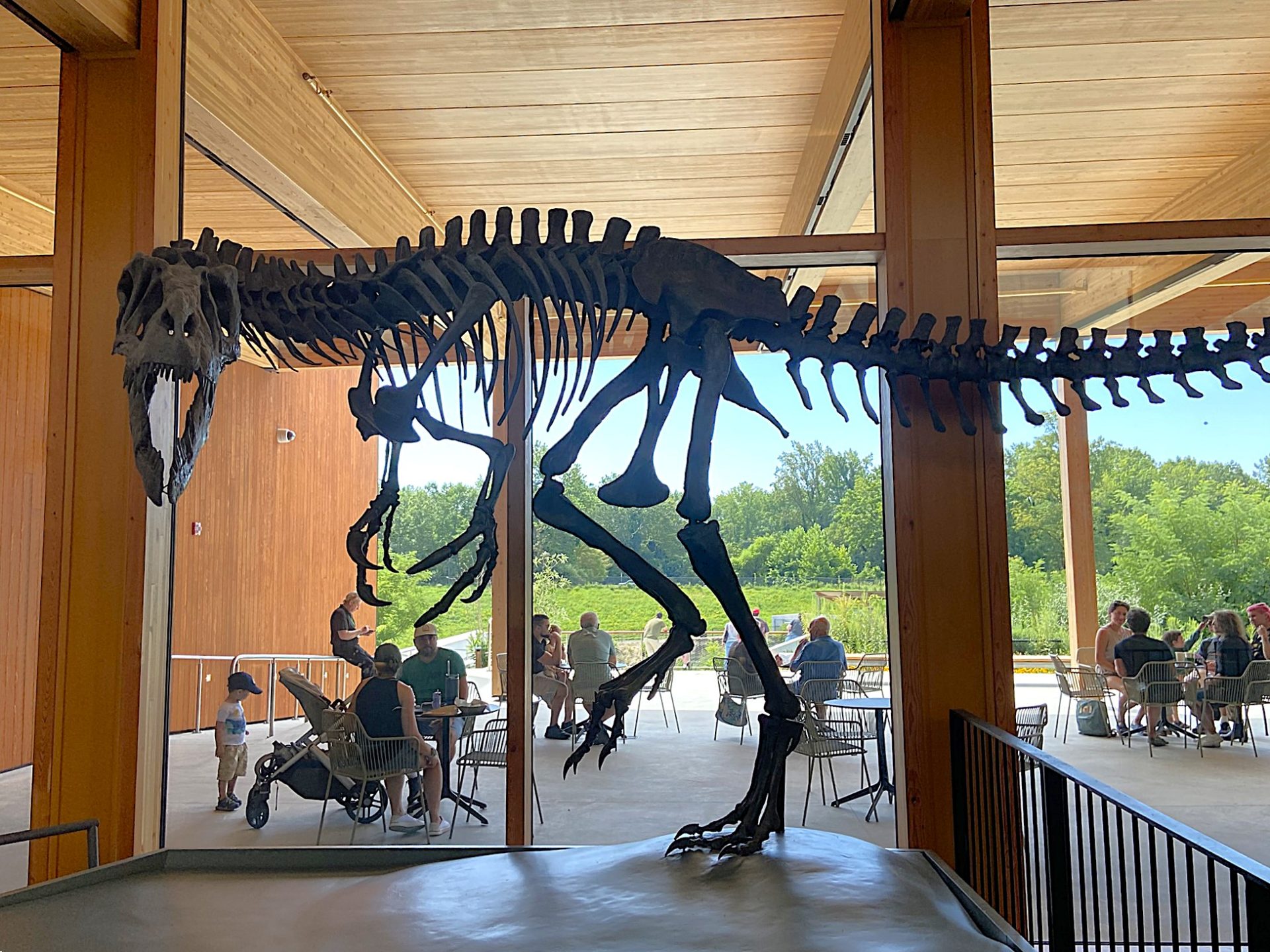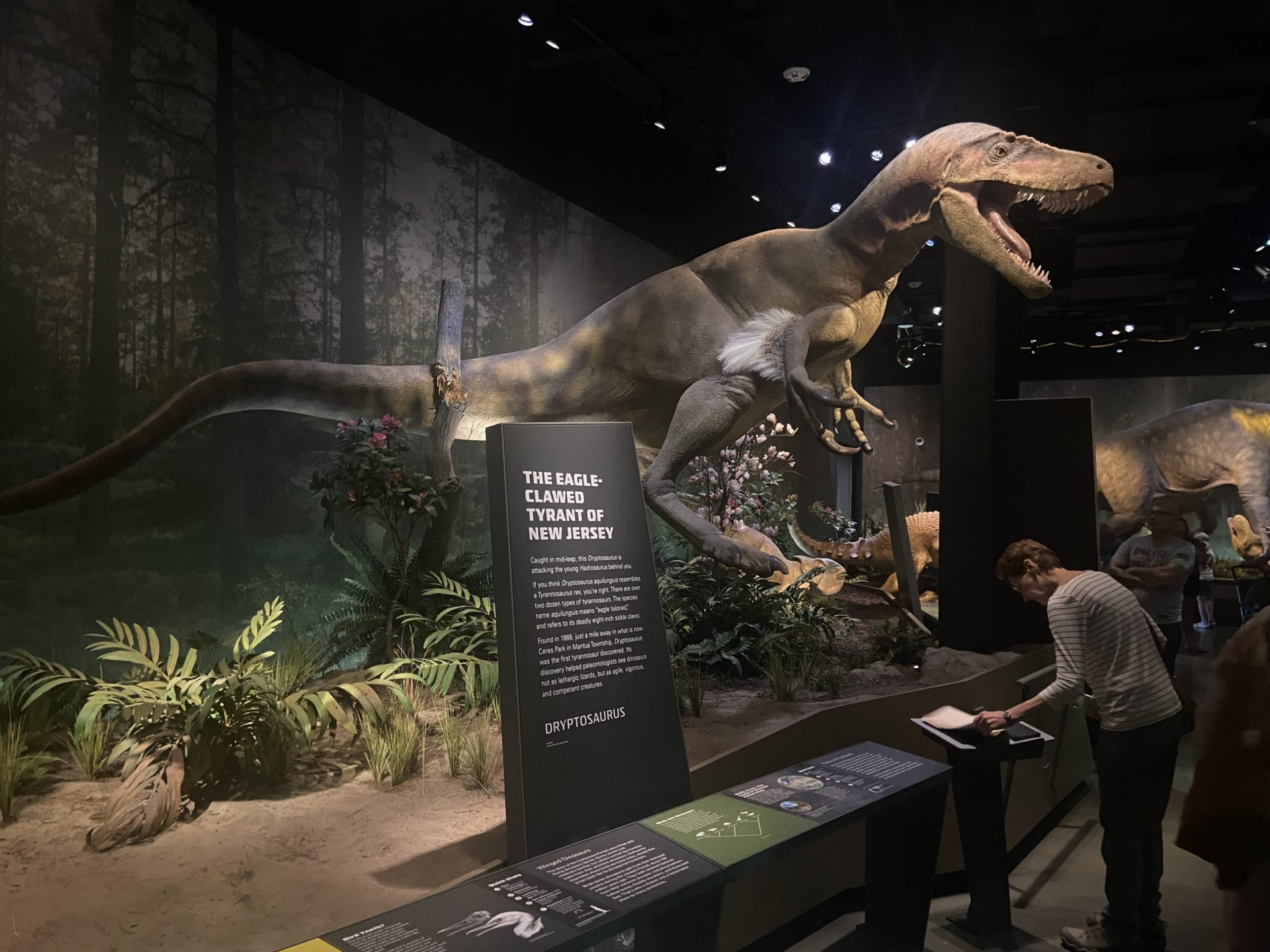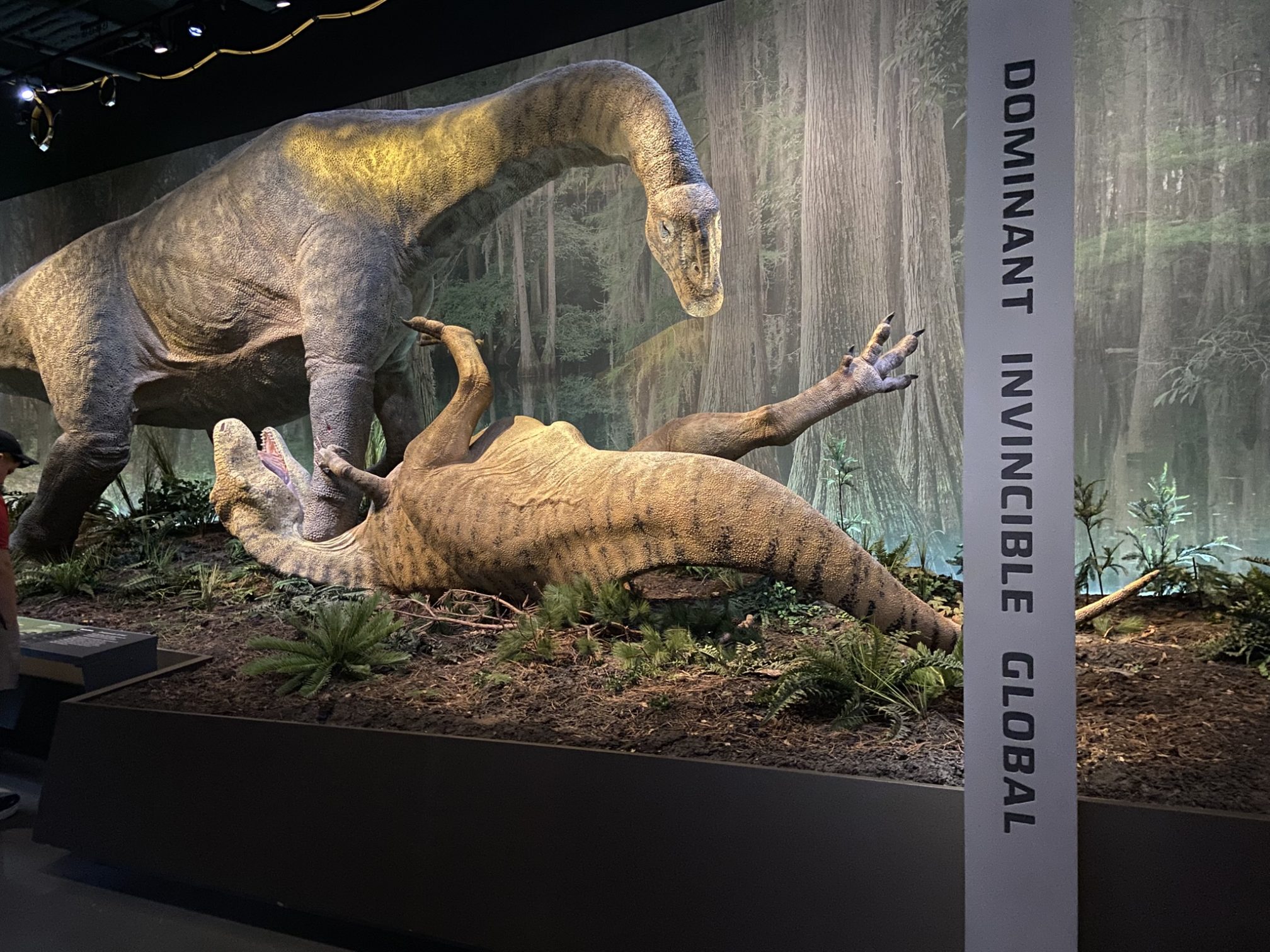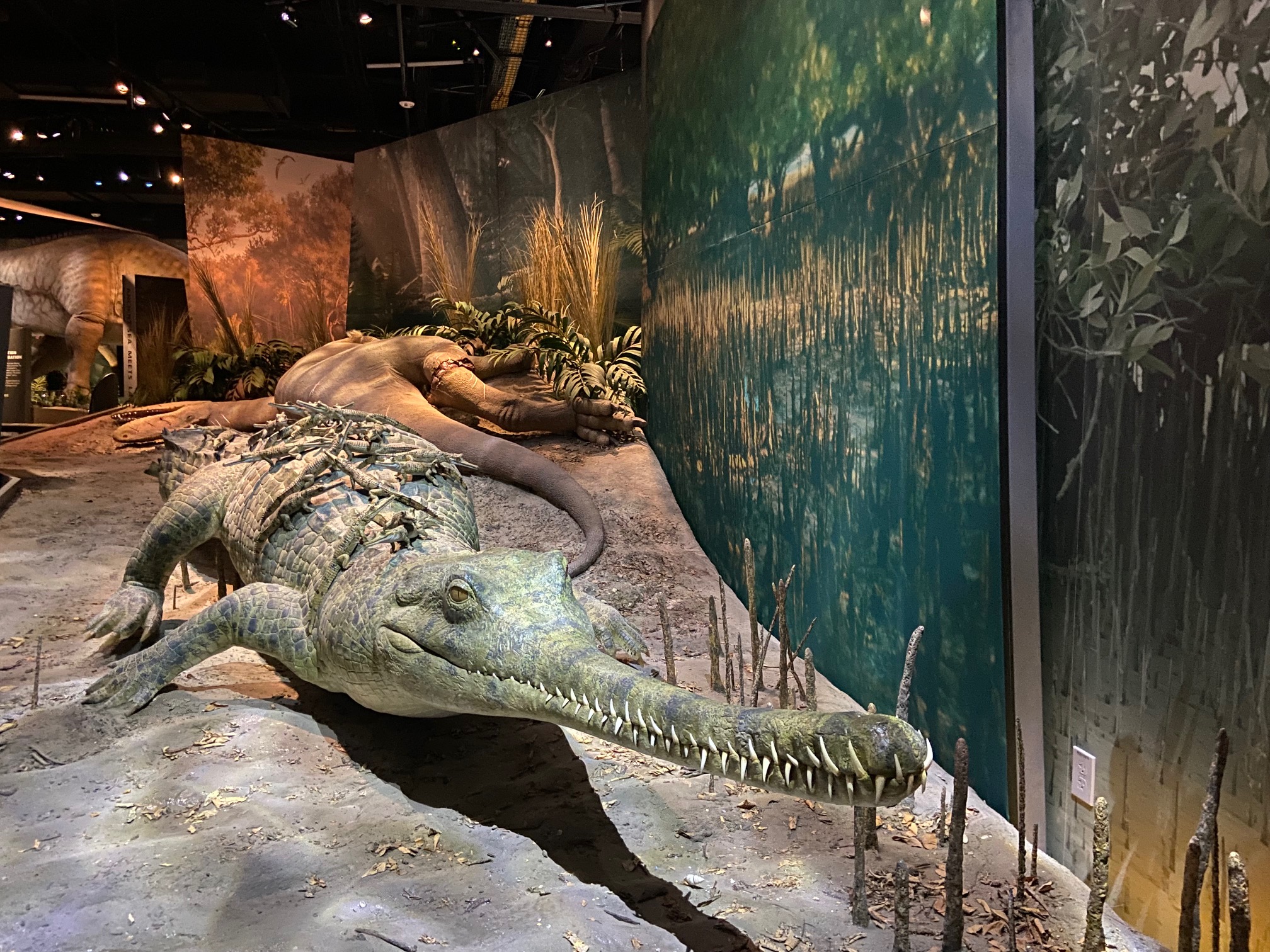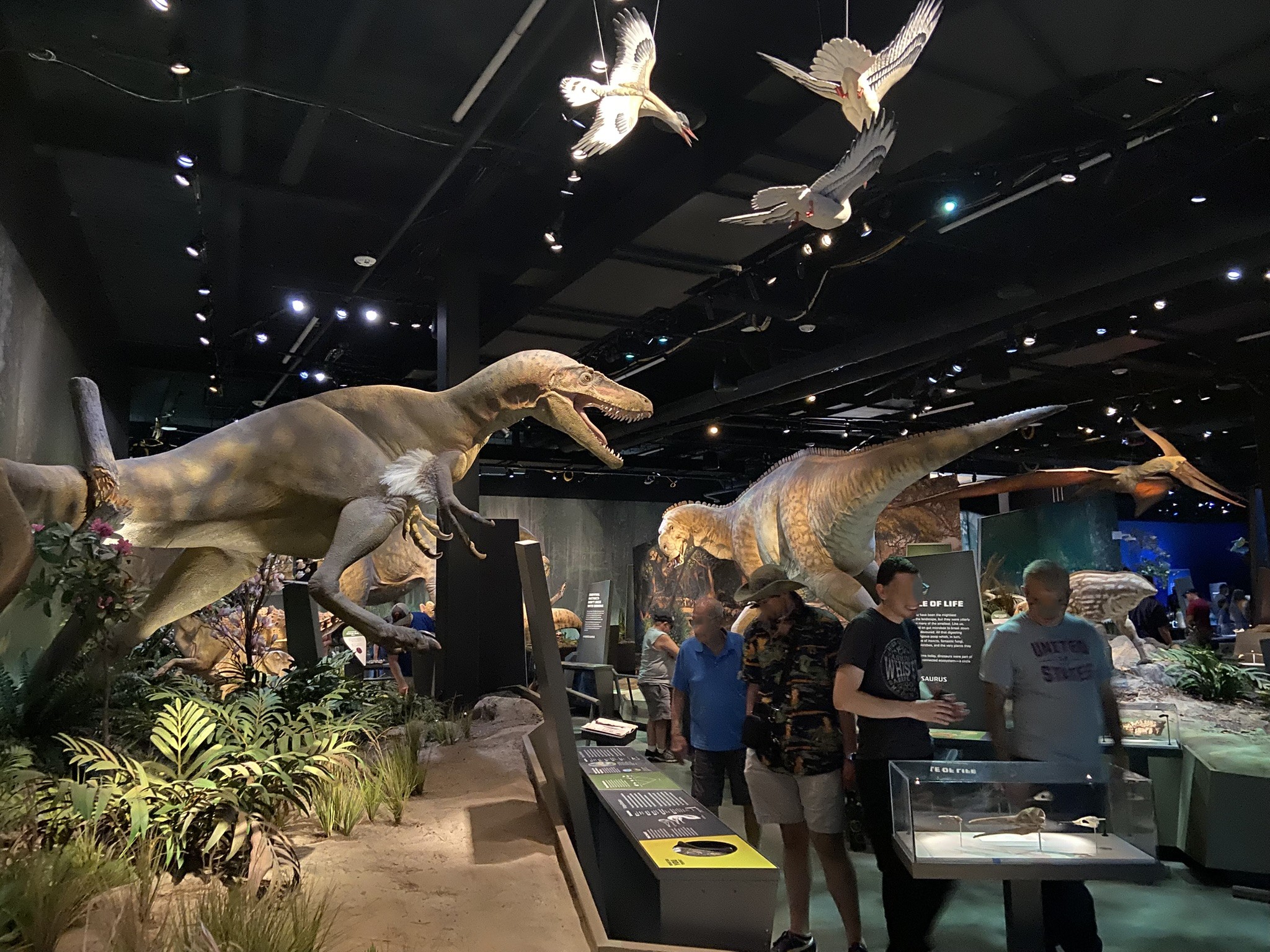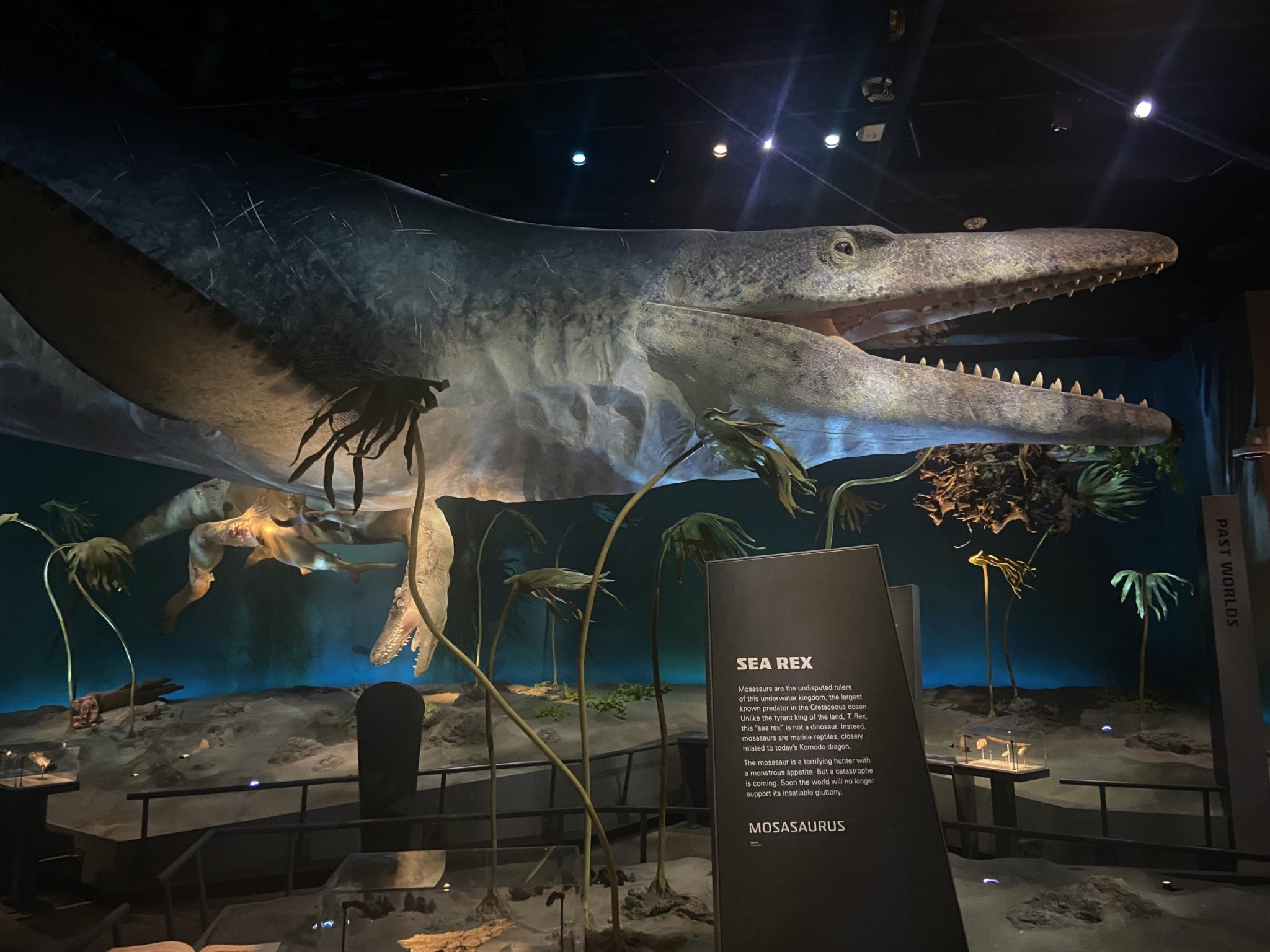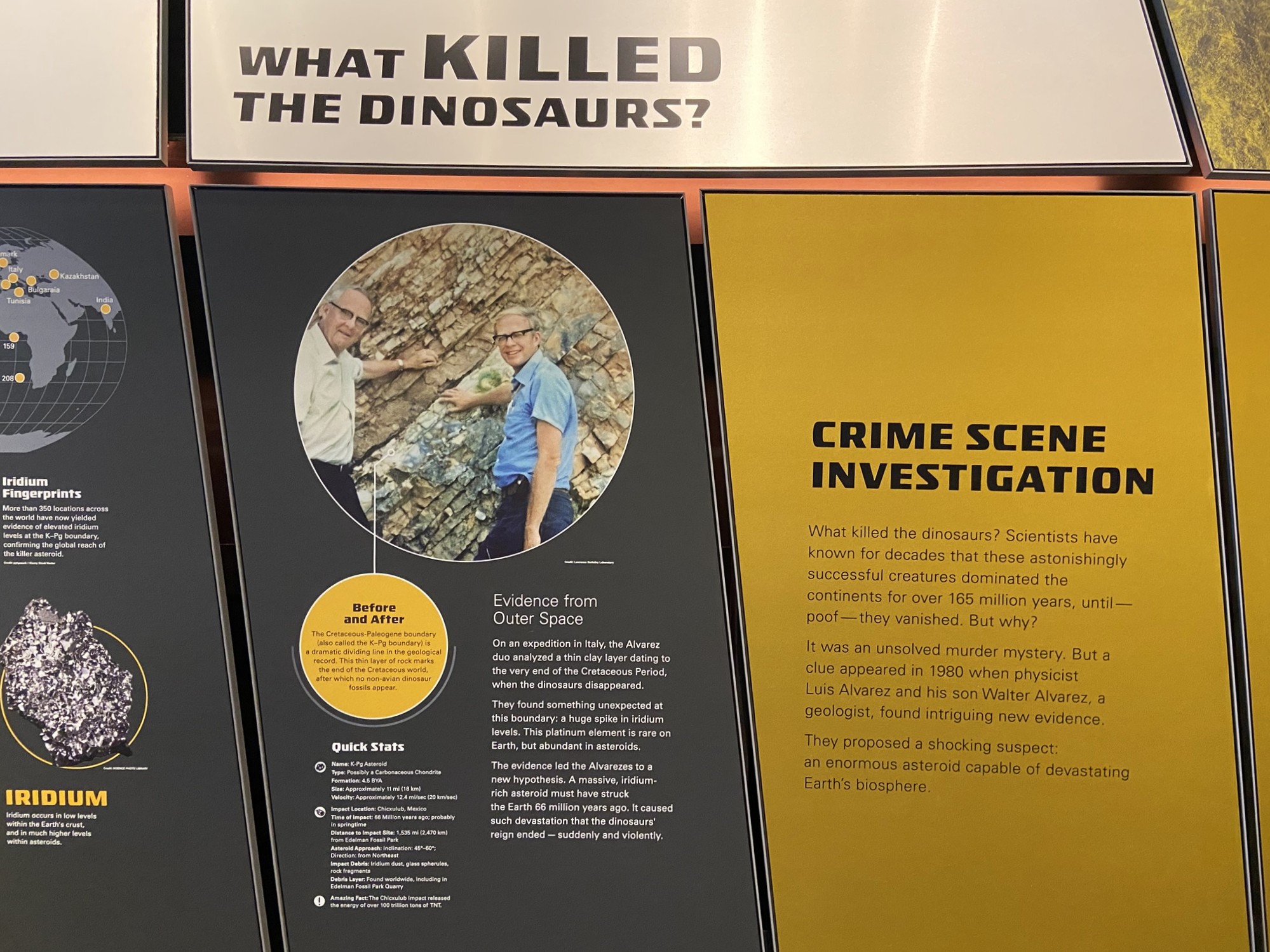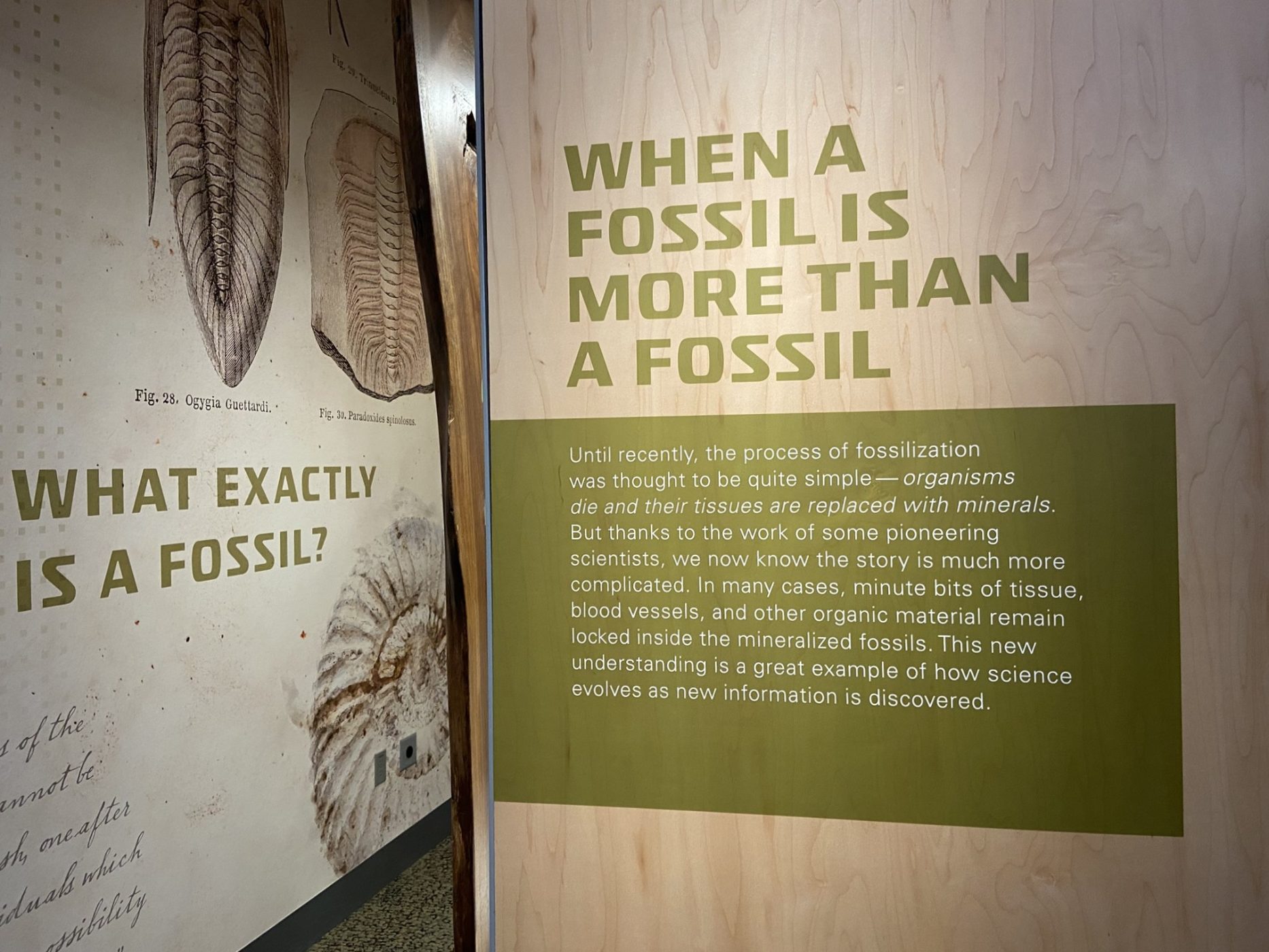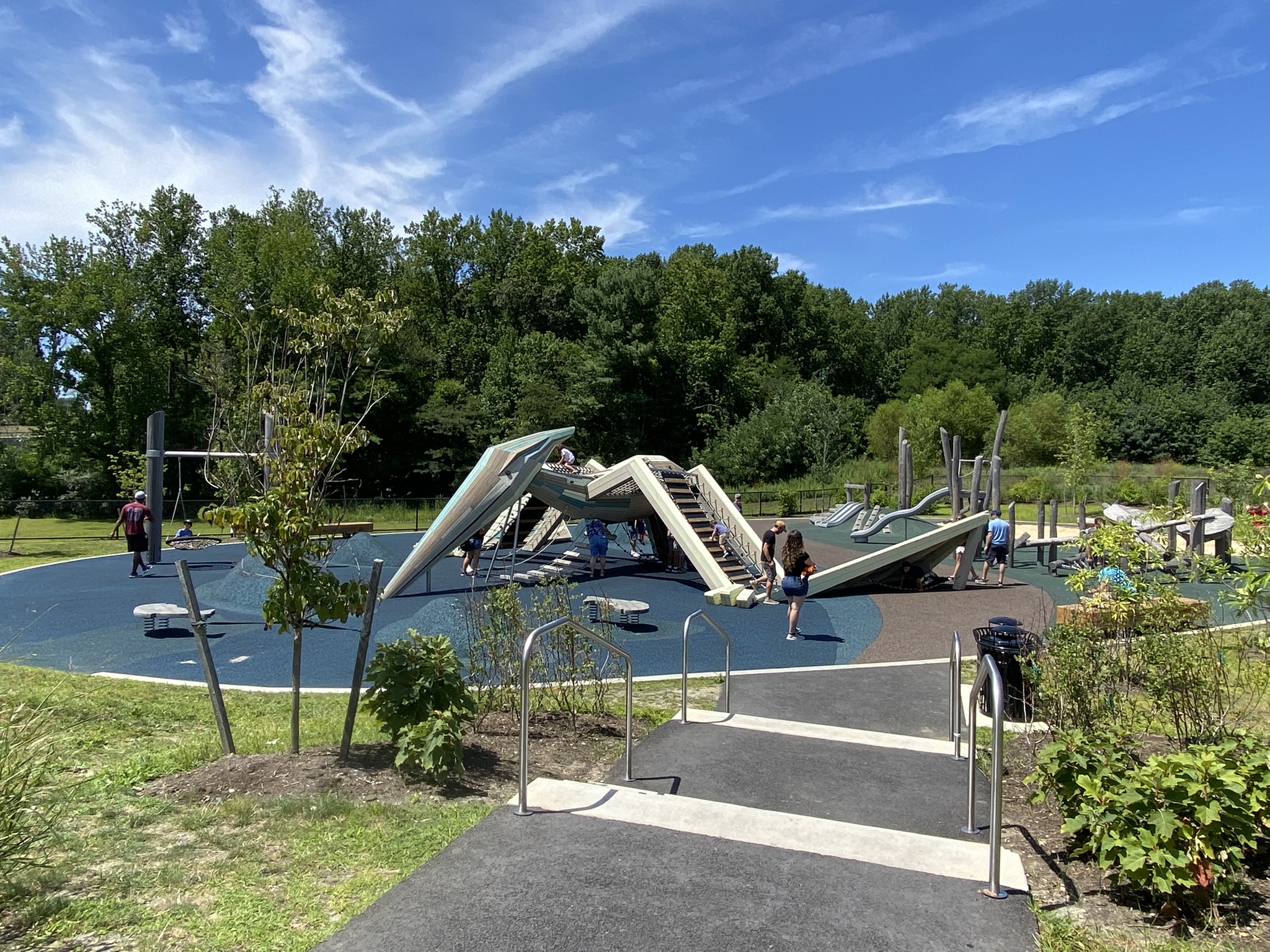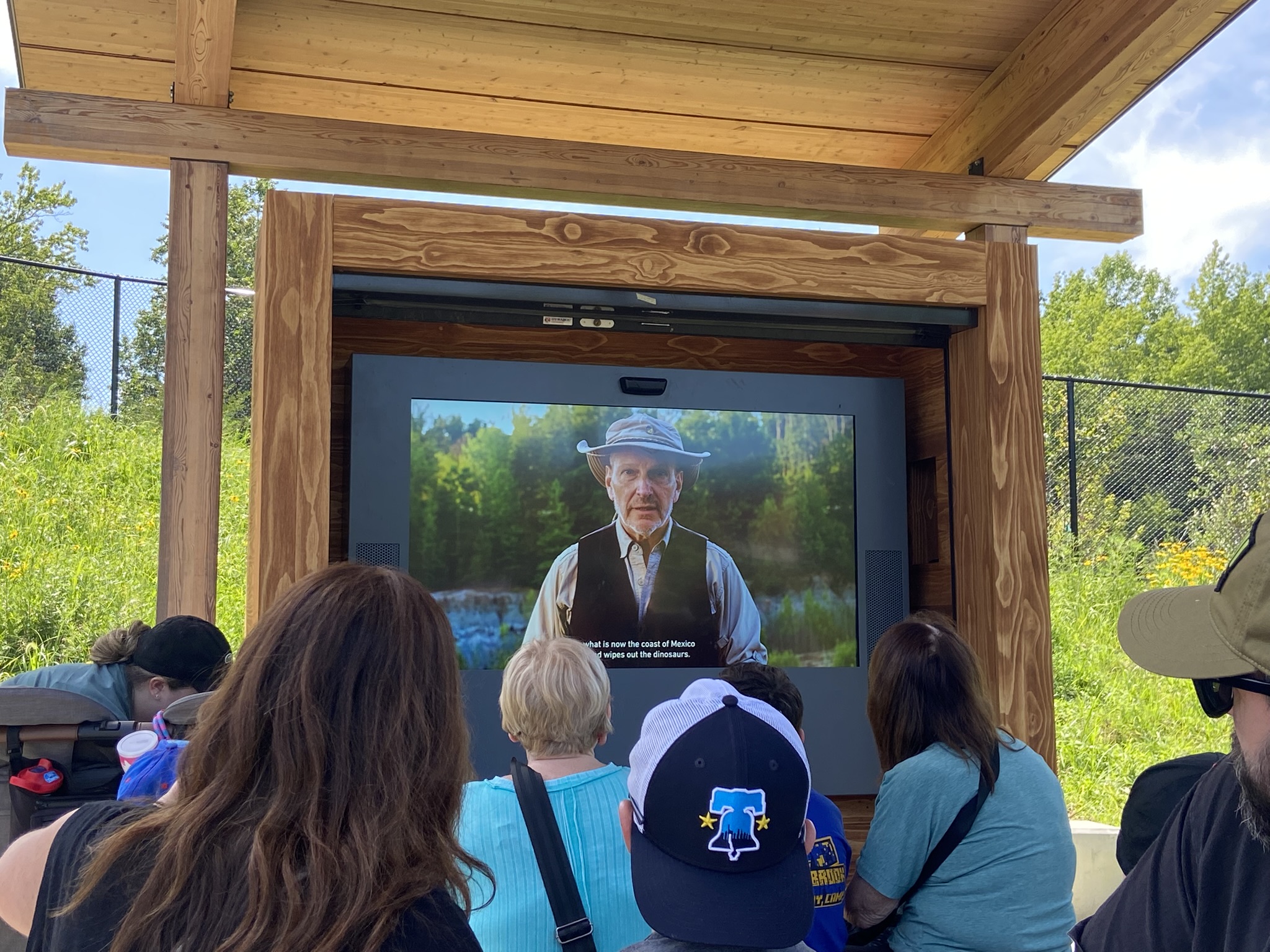Tucked behind a Lowe’s home center in southern New Jersey, a former quarry pit seems an unlikely spot for a fossil museum, but excavations here have revealed tantalizing evidence of the late Cretaceous period, 66 million years ago. Interactive, family-friendly exhibits at the new Edelman Fossil Park & Museum of Rowan University, a half-hour drive south of Philadelphia in suburban Mantua, present dramatic, life-size models of the region’s dinosaurs and ancient reptiles and describe the asteroid impact that ended their dominance. This cataclysmic event may be captured in the quarry’s fossil-rich layers. One museum highlight—and great fun—is the opportunity to dig for fossils in the quarry. The museum’s focus on its East Coast location and a particular prehistoric period, along with its hands-on emphasis, give visitors a sense of the vastness of time as well as the fragility of our planet.
From Quarry to Museum
The Inversand quarry sold greensand mined there as an organic fertilizer and was also known as a fossil site since the 1930s. Paleontologist Dr. Kenneth Lacovara, founding executive director of Edelman Fossil Park & Museum, has led research at the site for over 20 years. In 2014, Dr. Lacovara recommended that nearby public research institution Rowan University purchase the quarry, which it did in 2015, and he became founding dean of Rowan’s School of Earth & Environment. The university’s plans for an expanded fossil park took off in 2016 with a $25 million gift from alumni Ric and Jean Edelman, owners of an investment management company. The $73 million fossil park and museum, a 123-acre site including a 4-acre quarry, opened in March 2025 and expects to attract about 200,000 visitors annually.
Dr. Lacovara’s internationally significant excavations from the quarry bottom have unearthed more than 100,000 fossils from over 100 extinct species. He believes he has discovered what scientists around the world have sought: a layer from the time of the mass extinction of species some 66 million years ago. The museum’s motto— “Discover the past. Protect the future”—reflects its mission to educate people about the past, including New Jersey’s longtime role in fossil discovery, and inspire them to take action on current environmental threats.
Exploring the Museum and Park
Perched on the edge of the quarry, the museum’s 44,000-square-foot building shows a commitment to sustainability throughout. Energy from photovoltaics and geothermal heating and cooling make it a carbon net-zero facility, and special materials include Ornilux bird-safe glass. Upon entering the upper lobby, visitors get Explorer Keys (an RFID card) that unlock interactive experiences like fossil scavenger hunts for kids. On display here are reproductions of skeletons of regional inhabitants during the late Cretaceous, from saber-tooth salmon to a predatory-looking 25-foot-long Dryptosaurus. The latter, the first tyrannosaur discovered, was found in 1866 a mile from the museum site. A veranda provides space to relax or eat food from the café, and an overlook has a view of the quarry.
Immersive, colorful exhibits in two good-size halls called Dinosaur Coast and Monstrous Seas re-create the regional landscape of 66 million years ago on land and under the sea. Elements like films, information-packed panels, fossils and other exhibits, and kid-friendly activities like a search for windows that show underground life appeal to all ages. Two features of the museum stand out: the enthusiastic, informed staff on hand, and the magnificent, life-size dinosaurs and other creatures made by paleoartist Gary Staab. The duck-billed Hadrosaurus is a New Jersey point of pride, as the first hadrosaur and the world’s first nearly complete dinosaur skeleton was discovered in 1858 at a site 12 miles from the museum in Haddonfield. Most of southern New Jersey was under a shallow sea during the Late Cretaceous, but dead animals from the coast floated into the water. In the Monstrous Seas gallery, a 55-foot-long Mosasaurus, a marine reptile (“Sea Rex,” one panel calls it), hangs menacingly above the displays. Every creature represented in this hall was found on the museum grounds in a bone bed, including sharks and rays.
The Hall of Extinction & Hope presents information about the massive asteroid that destroyed the biosphere and 75 percent of existing species, including dinosaurs, 66 million years ago, an event known as the Fifth Extinction. The hall examines today’s climate and environmental crises too; at the Act Now kiosk, visitors choose ways to get involved and then access them at home through their Explorer Key’s webpage.
On the museum’s lower level, a cool-looking Collections & Conservation room behind a glass wall lets visitors watch paleontologists at work during the week, and kids enjoy Critter Cove, with live animals descended from creatures that lived millions of years ago. The Discovery Forest looks at nature and science as an adventure and features a theater, exhibits about evolution and how fossils are made (a Fossil Lottery shows that it’s not easy), and drawers with enticing treasures. For more excitement, visitors can pay extra for a virtual reality experience where teammates collect scientific samples from the Cretaceous period just before the asteroid impact.
Kids can let off steam outside at the Pterosaur Pterrace playground as they explore a wooden Pteranodon (a flying reptile) with a 45-foot wingspan, and the museum has 1.6 miles of nature trails. Both the playground and trails are free to the public.
Digging for Fossils
The lure is clear: dig up and take home up to three fossils from the museum’s quarry, where active research is ongoing. Available May through October for an extra fee, the museum’s outstanding 75-minute Quarry Dig experience for kids and adults provides orientation and instruction, equipment and time to dig, and fossil identification using booklets and staff help. How old are these fossils? A sign indicates the layer the public digs in dates from 60 to 66 million years ago.
Reaching Out
The museum is brand-new, so programs and events beyond daily in-museum activities (such as a Children’s Storytime) are constantly added. Some have involved sky-gazing, bird-watching, and journaling. Yoga with the Dinosaurs sessions are held on the veranda, and during monthly Citizen Science Saturdays, attendees learn how to contribute data to ongoing scientific projects. The museum also offers school field trips. It’s worth noting that visitors can purchase annual museum memberships at reasonable prices, with benefits including a reduced price for Quarry Dig sessions and access to the EFM Channel of online information.
Edelman Fossil Park & Museum is an outstanding addition to New Jersey’s scientific scene. Even those who don’t usually feel the pull of science will find something to engage their imaginations and minds, whether it’s a tiny, time-worn fossil or New Jersey’s official state dinosaur, Hadrosaurus.
Linda Cabasin is a travel editor and writer who covered the globe at Fodor’s before taking up the freelance life, but this was her first experience digging for fossils. She is a contributing editor at Fathom. Follow Linda on Instagram at @lcabasin.
Featured photo: The modern museum building uses sustainable materials including durable types of wood. Photo by Linda Cabasin


